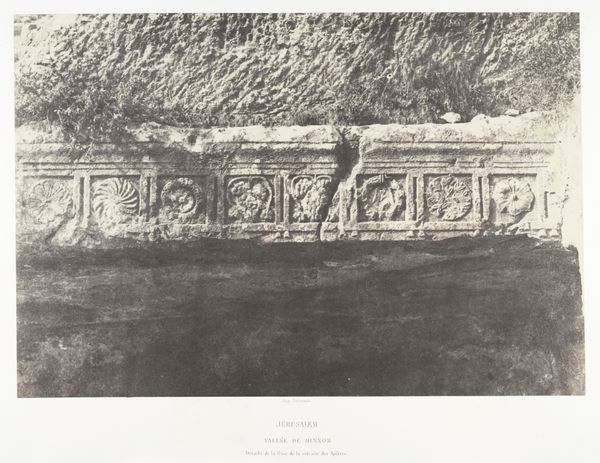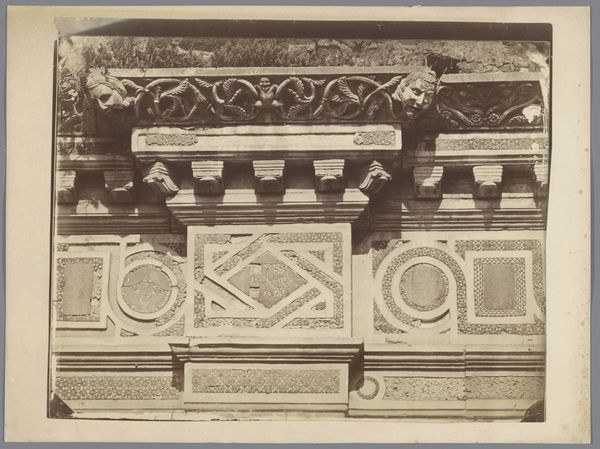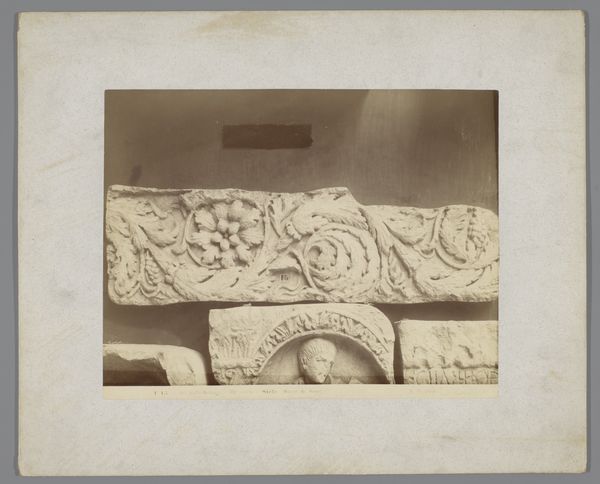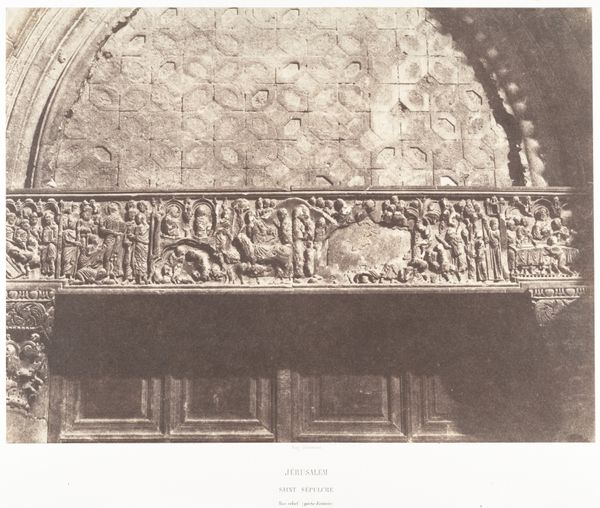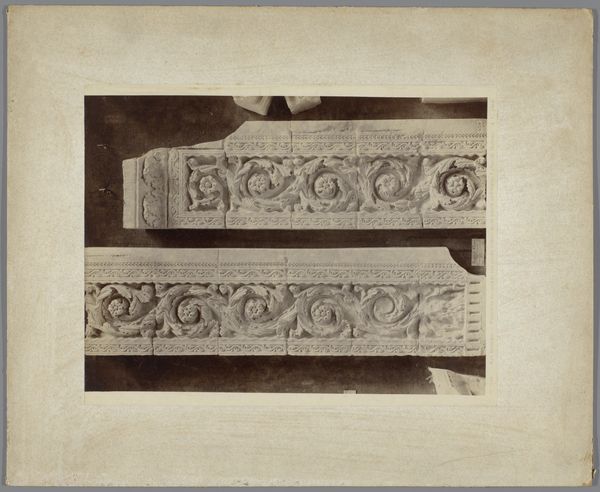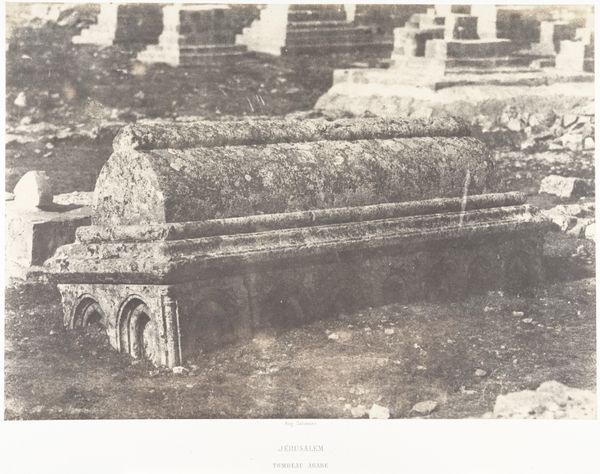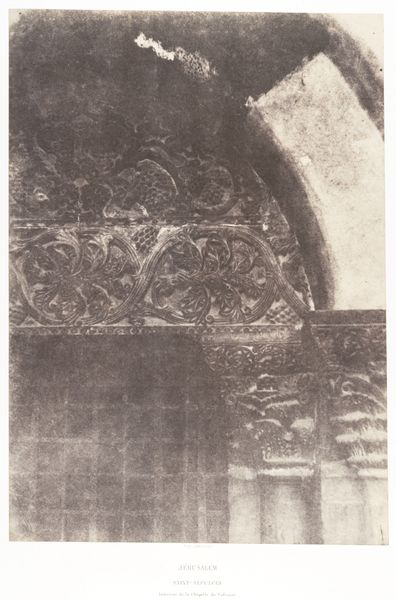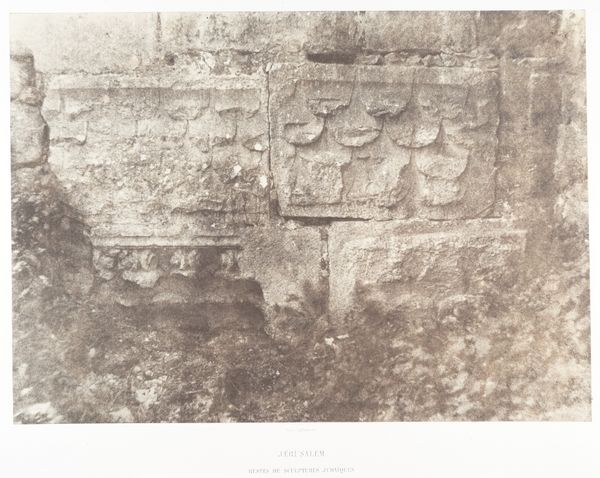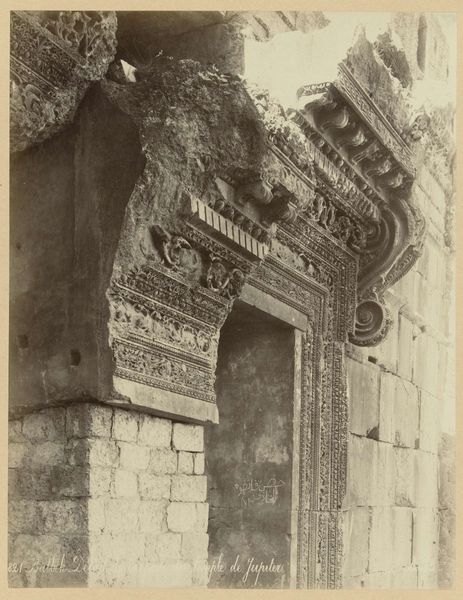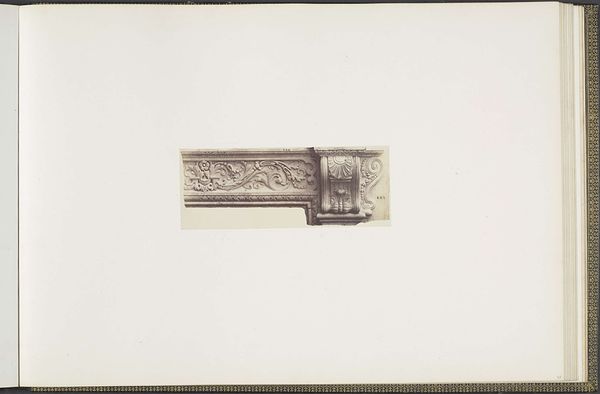
Jérusalem, Saint-Sépulcre, Bas-relief (porte murée) 1854 - 1859
0:00
0:00
print, relief, photography, sculpture, architecture
# print
#
organic shape
#
relief
#
photography
#
carved into stone
#
geometric
#
ancient-mediterranean
#
sculpture
#
architecture
Dimensions: Image: 23.6 x 32.8 cm (9 5/16 x 12 15/16 in.) Mount: 44.3 x 60.5 cm (17 7/16 x 23 13/16 in.)
Copyright: Public Domain
Auguste Salzmann created this photograph of a bas-relief at the Church of the Holy Sepulchre in Jerusalem, using a paper negative, sometime in the 1850s. Salzmann was part of a wave of 19th-century photographers who ventured to the Middle East, often with an eye towards documenting biblical history. Consider the act of photographing the Holy Land during this period. It was enmeshed with colonial power dynamics, where the camera became a tool for Westerners to claim ownership over the narrative and representation of foreign lands. Salzmann’s work reflects this tension. While he aimed to provide an objective record, his perspective was inevitably shaped by his cultural background. He sought to capture what he believed was the "authentic" Jerusalem. But what does authenticity mean when viewed through the lens of colonialism and personal belief? Think about the stories that are told, and those that are left out, when a place is documented in this way. It invites us to consider how cultural and historical contexts shape not only what we see, but how we interpret it.
Comments
No comments
Be the first to comment and join the conversation on the ultimate creative platform.
